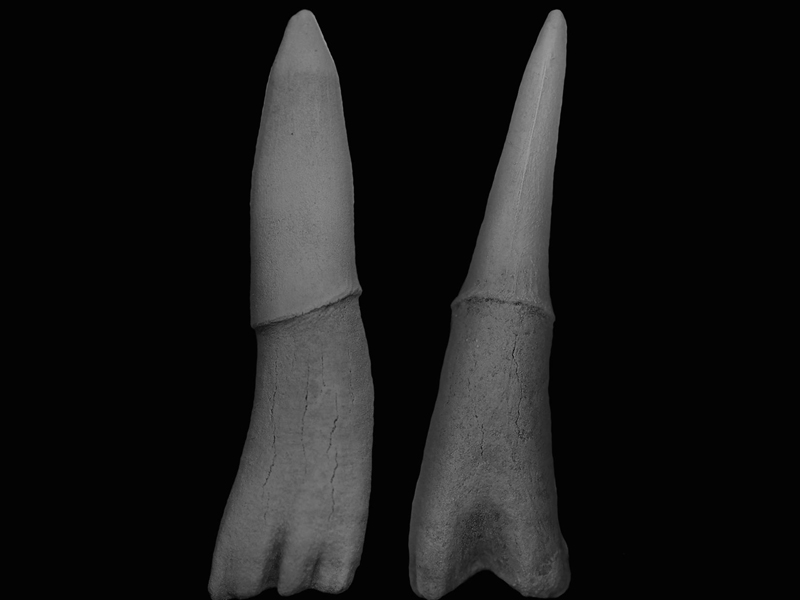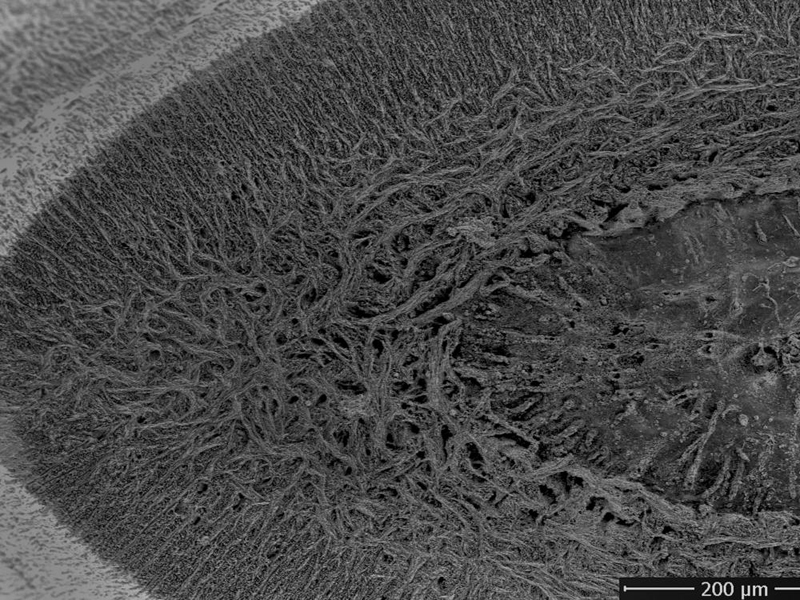There are two theories about where teeth originated: They either evolved from external scales (the outside-in hypothesis) or from somewhere inside the mouth (the inside-out hypothesis).
Researchers studying a fossil of the Ischyrhiza mira species – an extinct sawfish that lived in North America around 65 to 100 million years ago – have found more evidence backing up the outside-in idea.
Like the sawsharks and sawfishes of today, the creature had jagged spikes around its snout to help ward off predators and forage for food. It's thought that these spikes, called rostral denticles, are modified versions of the scales on the rest of the body.
In an attempt to examine the relationship between rostral denticles and scales, the team analyzed the hard enameloid outer layer of the snout spikes – but what they found was significantly different from what they were expecting.
 A rostral denticle of I. mia. (Todd Cook/Penn State/Wiley Publications)
A rostral denticle of I. mia. (Todd Cook/Penn State/Wiley Publications)"Surprisingly, I. mira's rostral denticle enameloid was anything but simple," says vertebrate paleontologist Todd Cook from Pennsylvania State University. "It was considerably more complex than the enameloid of body scales."
"In fact, the overall organization of the enameloid in this ancient sawfish resembled that of modern shark tooth enameloid, which has been well-characterized."
In particular, the enameloid on the fossil matches the enameloid on modern shark teeth in the way that it's made up of bundled packages of fluorapatite microcrystals, arranged in neat lines near the surface of the tooth and more randomly arranged lower down.
Running through these layers are packed microcrystals positioned perpendicularly to the surface of the tooth. These different orientations give shark teeth their strength and stress resistance, and it looks like it's the same story with the I. mira.
"It is likely that the bundled microcrystal arrangement of the enameloid of I. mira's rostral denticles also served as a way to withstand mechanical forces," says Cook.
 A rostral denticle cross section showing the bundled enameloid. (Todd Cook/Penn State/Wiley Publications)
A rostral denticle cross section showing the bundled enameloid. (Todd Cook/Penn State/Wiley Publications)While it's not impossible that these scales and teeth evolved their bundled microstructures separately, it makes more sense if one came after the other – in other words, the outside-in hypothesis about where teeth came from.
Interestingly enough, the researchers didn't actually intend to look into the evolutionary history of teeth when they began their analysis of rostral denticles, but their findings could have a significant impact on future studies in this field.
As more and more similarities are found between the outsides of marine creatures and the gnashers inside our mouths, it's looking more likely that the teeth inside our mouths are actually highly evolved fish scales.
"This finding provides direct evidence supporting the outside-in hypothesis, as it shows that scales have the capacity to evolve a complex tooth-like enameloid outside of the mouth," says Cook.
The research has been published in the Journal of Anatomy.

